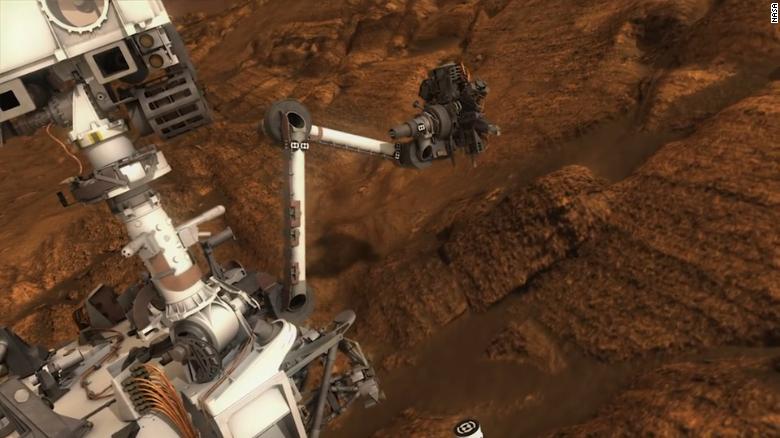
NASA has chosen the landing site for its next rover mission to Mars: a treacherously rugged 3.6 billion-year-old crater.
The 28-mile- (45-kilometer) wide Jezero Crater was selected as the destination for the mission, which is scheduled to launch in 2020, because of its potential for scientific research.
“The landing site in Jezero Crater offers geologically rich terrain, with landforms reaching as far back as 3.6 billion years old, that could potentially answer important questions in planetary evolution and astrobiology,” said Thomas
Zurbuchen, associate administrator for NASA’s Science Mission Directorate.
“Getting samples from this unique area will revolutionize how we think about Mars and its ability to harbor life,” he added.
The crater was chosen after a five-year search that examined some 60 other sites on Mars.
Jezero’s ancient lake-delta system offers promising sampling targets of at least five kinds of rock, including clays and carbonates that have high potential to preserve signatures of past life, NASA said in a press statement posted online.
The material carried into the delta from a large watershed may also contain a wide variety of minerals from inside and outside the crater, it added.
Organic matter has already been found on the planet in soil samples taken from 3 billion-year-old mudstone and methane has been detected in the Martian atmosphere.
Landing on Mars is incredibly difficult. Only 40% of missions sent to the Red Planet by any agency have been successful.
Part of this is due to the thin Martian atmosphere, which is only 1% of Earth’s, so there’s nothing to slow down something trying to land on the surface.
The United States is the only country to have missions that survived landing on Mars. NASA has been flying past, orbiting, landing and roving over Mars since 1965.
‘Once out of reach, now conceivable’
The geologic diversity that makes Jezero Crater interesting to scientists also makes it a challenge for the rover’s entry, descent and landing.
NASA said as well as its river delta and small crater impacts, the site contains numerous boulders and rocks to the east, cliffs to the west and depressions filled with aeolian bedforms (wind-derived ripples in sand that could trap a rover) in several locations.
“The Mars community has long coveted the scientific value of sites such as Jezero Crater, and a previous mission contemplated going there, but the challenges with safely landing were considered prohibitive,” said Ken Farley, project scientist for Mars 2020 at NASA’s Jet Propulsion Laboratory in Pasadena, California.
“But what was once out of reach is now conceivable, thanks to the 2020 engineering team and advances in Mars entry, descent and landing technologies.”
When the landing site search began, mission engineers already had refined the landing system such that they were able to reduce the Mars 2020 landing zone to an area 50 percent smaller than that for the landing of NASA’s Curiosity rover at Gale Crater in 2012.
Sky crane
NASA has added a new capability called Terrain Relative Navigation, which will enable the “sky crane” descent stage, the rocket-powered system that carries the rover down to the surface, to avoid hazardous areas.
“Nothing has been more difficult in robotic planetary exploration than landing on Mars,” said Zurbuchen.
“The Mars 2020 engineering team has done a tremendous amount of work to prepare us for this decision. The team will continue its work to truly understand the TRN system and the risks involved, and we will review the findings independently to reassure we have maximized our chances for success.”
On November 26, NASA’s Mars InSight lander will touch down on the Red Planet at 3 p.m. EST, the first time in six years a new mission will land on Mars.
InSight, or Interior Exploration using Seismic Investigations, Geodesy and Heat Transport, is going to explore a part of Mars that we know the least about: its deep interior. It launched May 5.